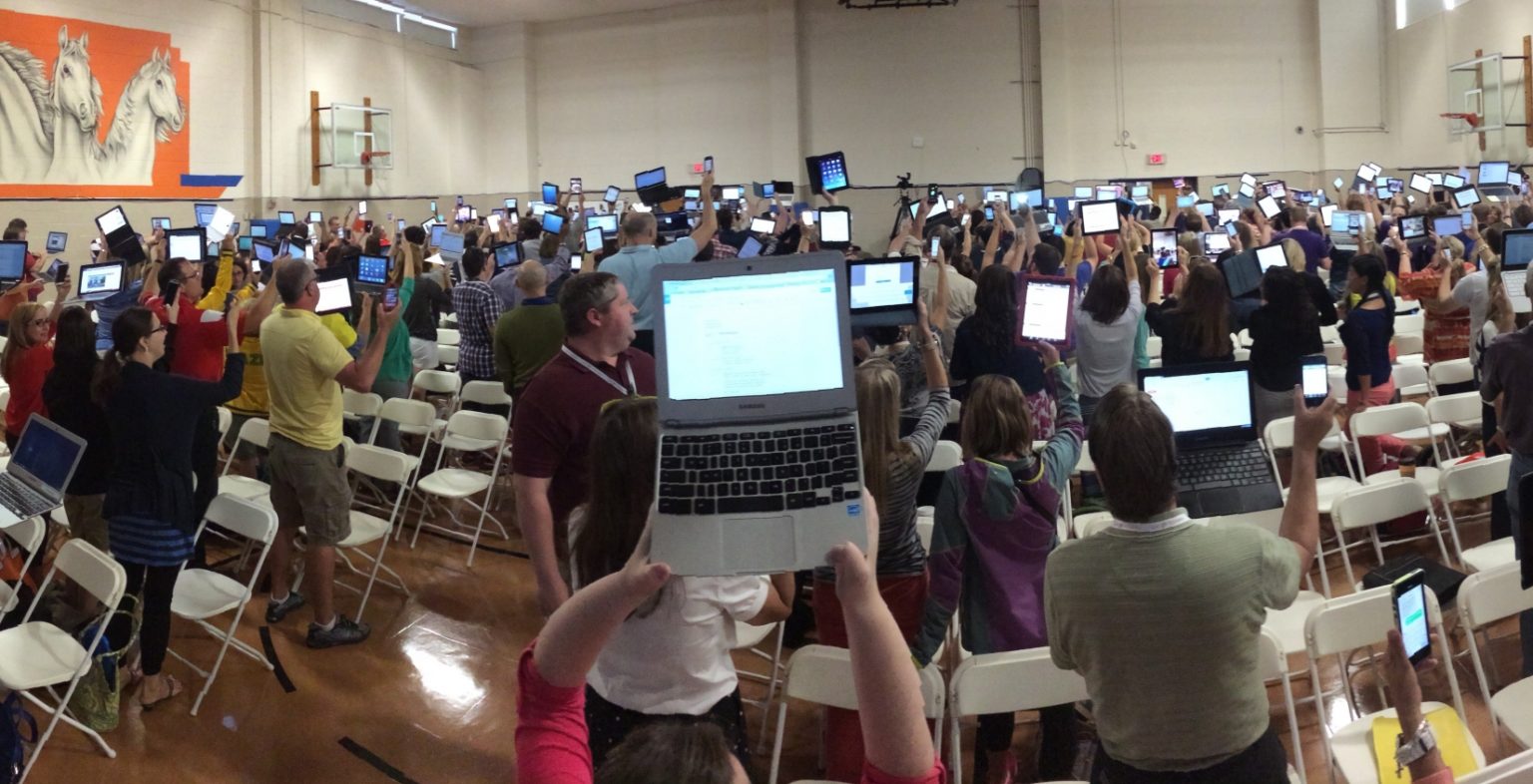The climate is changing. And so are the ways the media tries to cover it.
In a world of fake news, ‘post-truth’ and lies, new media organisations are critical to communicating an issue that should be everyone’s concern.
“Many television producers see climate change as too niche or for fanatics. It’s too remote, it’s too boring, it’s too consistently depressing, it’s too alarming”, said James Painter, author of a new book from Oxford University’s Reuters Institute on climate change reporting, at its launch in central London last night.
That creates a space for new media organisations – online outlets like Buzzfeed, Vice News, the Huffington Post and more, including DeSmog – with fresh ideas and identities to step in.
“These new players are really doing a good job of trying to find new ways to cover it,” Painter said.
We are living in an era of climate silence, Painter said. But it’s not just bombs falling in Aleppo, tales of economic woe, and the latest electoral shock that knock climate off the media’s agenda.
It’s Kanye and Kim, food porn, and cats.
It’s a crowded space. And climate change coverage is being suffocated in the squeeze.
Across three hours of presidential debates this autumn, two minutes and and 27 seconds were given to discussing climate change, according to Grist.
A Loughborough University study likewise found that in the six weeks prior to the Brexit referendum, only 0.5 percent of traditional newspaper coverage referenced environmental issues, despite much of the UK’s clean air, water and emissions regulations stemming from Europe.
TV news didn’t give a single second to the issue.
How the media covers climate change is irrelevant if it’s not covered at all.
That’s why new media organisations with high content turnover and overt commitments to big social issues such as climate change – as well as cats – are increasingly important, Painter said.
“Of course traditional media do some great coverage but these new players provide additional material that raises the profile of climate change in the public sphere.”
“These are important additions at a time when the media is struggling with this issue of climate silence.”
One problem is that climate change is always happening, so it’s never news.
That means traditional news editors are liable to shrug when stories are offered up, explained Fiona Harvey, Guardian environment correspondent, speaking on a panel at the book launch.
“The fundamental underlying story of climate change is not news so we need to find new ways of telling it, and that is a challenge for everyone.”
So how are these new players approaching the issue differently?
Painter and his team analysed over 500 articles on the Paris climate change conference to try and find out.
To start with, new media’s focus is completely different. Internet-embedded and social-media savvy, they tend to speak a visual language rather than relying on reams of text to communicate a point, Painter said.
They’re also very different in tone.
“Meet The People Trolling The Fuck Out Of The Paris Climate Talks”, ran one Buzzfeed article covering the negotiations.
A Times headline, it is not.
But this mixture of humour and irreverence is critical to engaging an audience beyond the small circle of policy wonks that normally follow the issue, Painter said.
And the differences aren’t superficial. The substance of the articles is also significantly different.
New media tended to focus on human interest stories and events happening around the edges of the conference, Painter found, leaving the minutiae of the UN proceedings to traditional outlets established on the beat.
They also approach the problem in a different way, using more “immersive” techniques, Painter said.
In many videos or stories in new media outlets, the journalist puts themselves front and centre, where they directly address the viewer and say “come with me on a journey. Come with me and see what’s happening. They do not stand in the way of the viewer, they take them on journey.”
This personalised approach resonates with a broader audience than articles that focus on the political process, which serve communities already engaged in the issue.
The differences also extend to new media’s coverage of climate science.
Traditional media outlets are often accused of engineering a false balance when it comes to the science of climate change, inviting a climate denier to speak alongside an authoritative scientific voice.
For new media, that’s a fiction. As Kelly Oakes, Buzzfeed’s science editor told the audience, “we’re not going to argue about the science on climate, because we know the science of climate is there”.
And Buzzfeed simply wouldn’t get away with portraying a false balance, as its young, informed, impassioned audience would see through it.
Instead of manufacturing conflict, new media tries to appeal to people’s sense of curiosity and compassion. “I think our audience or our editors don’t necessarily care about the news angle so long as it told in an interesting way”, Oakes said. “We try and get the second-day story, but get it today”.
This frees the new media from the traditional constraint of a news cycle, and allows journalists to explore the human angle, the story behind the story.
But emotive reporting also has its dangers, Harvey points out.
“We need to appeal to people emotionally to get climate change across but the problem with emotions is they flip. If the environment isn’t an emotional issue it’s nothing. But at the same time we need to be very wary of appealing to emotions because it’s very dangerous.”
“You also have to have the fundamental facts there as well.”
There’s a big difference between solid, well-researched, passionate reporting and the clickbait that fake news sites have been so successful at peddling in recent months.
The critical consideration, Harvey argued, is between deciding if what matters is enthusiastic and solid reporting, or if “what matters is appealing to people’s emotions to get them to come to your site, whether they are fact based or not, whether they are true or post- truth”.
Beyond carving a space for climate news in a noisy world, that is now the challenge journalists face. The challenge of reaching a wide audience, without surrendering to the forces driving fake news.
As Harvey said, “at heart, all the best stories are environment stories”.
Climate change is no longer an item on a list of issues that needs covering. It is increasingly the context for stories about social change, political progress, and economic recovery.
In an era of Trump, Brexit and fake news, media players old and new need to find fresh ways to tell them.
Main image credit: Wesley Fryer via Flickr CC–BY
Subscribe to our newsletter
Stay up to date with DeSmog news and alerts






